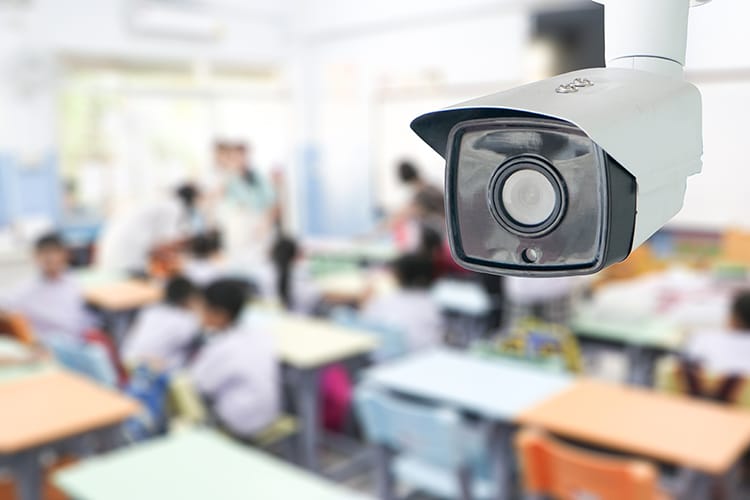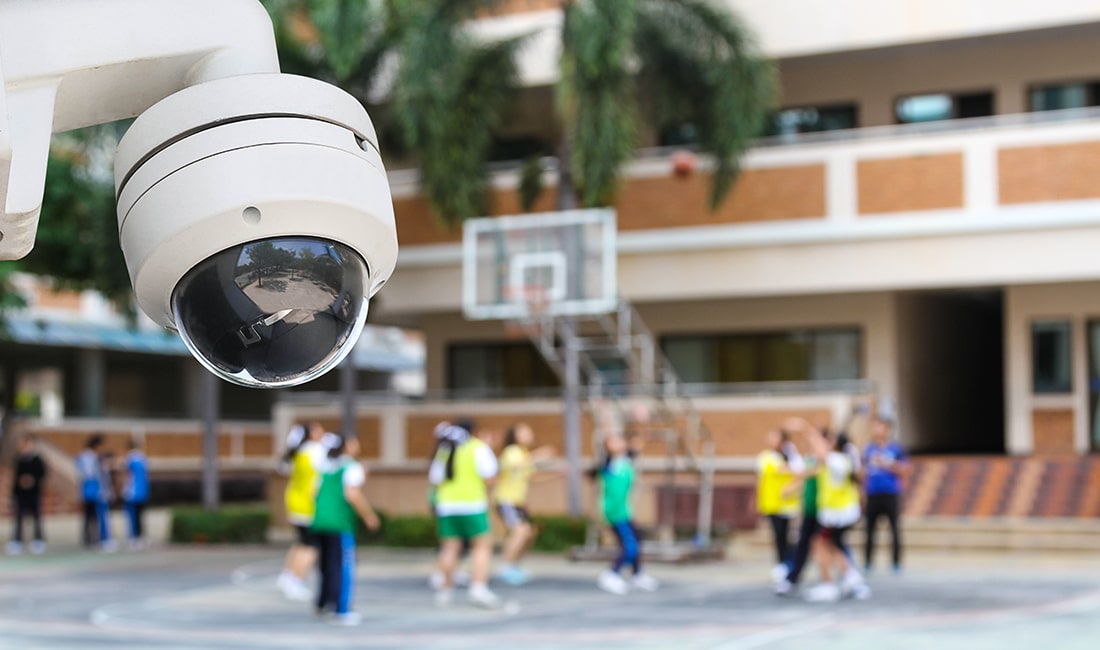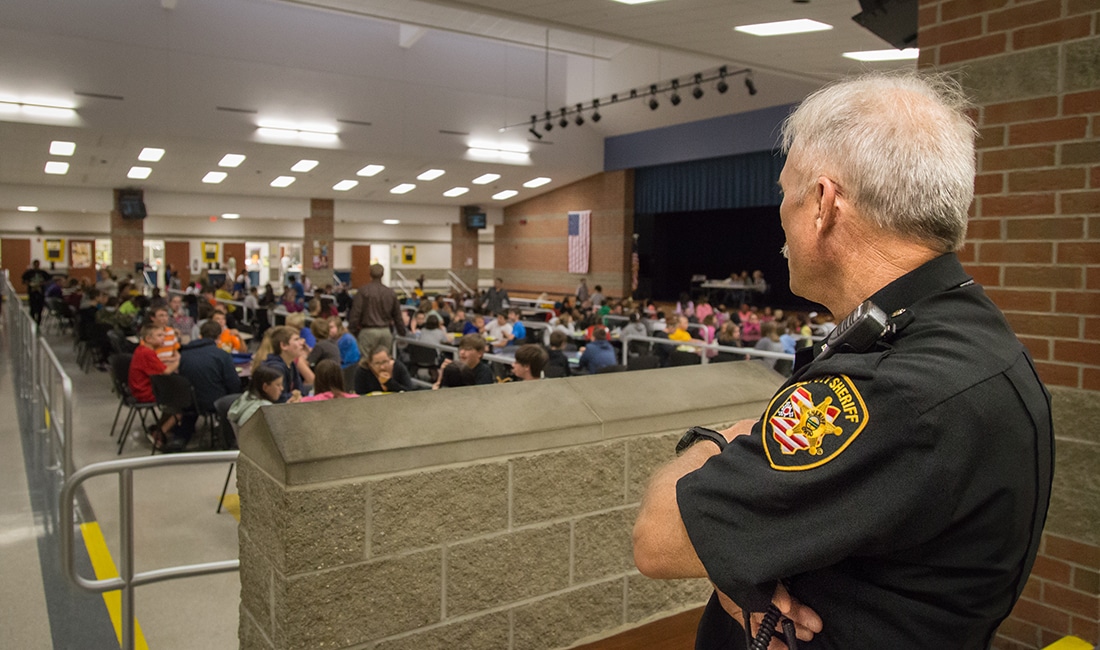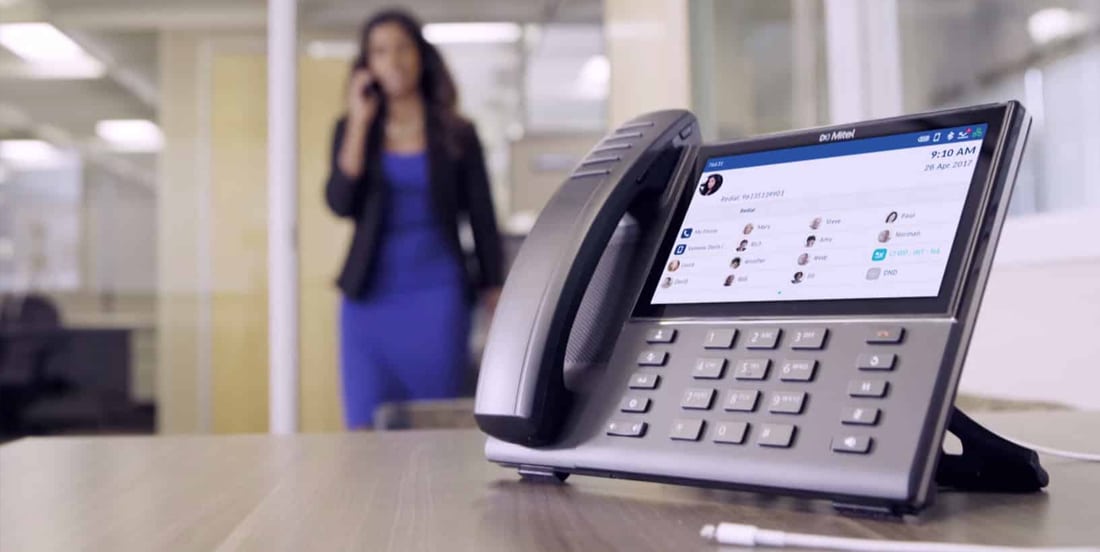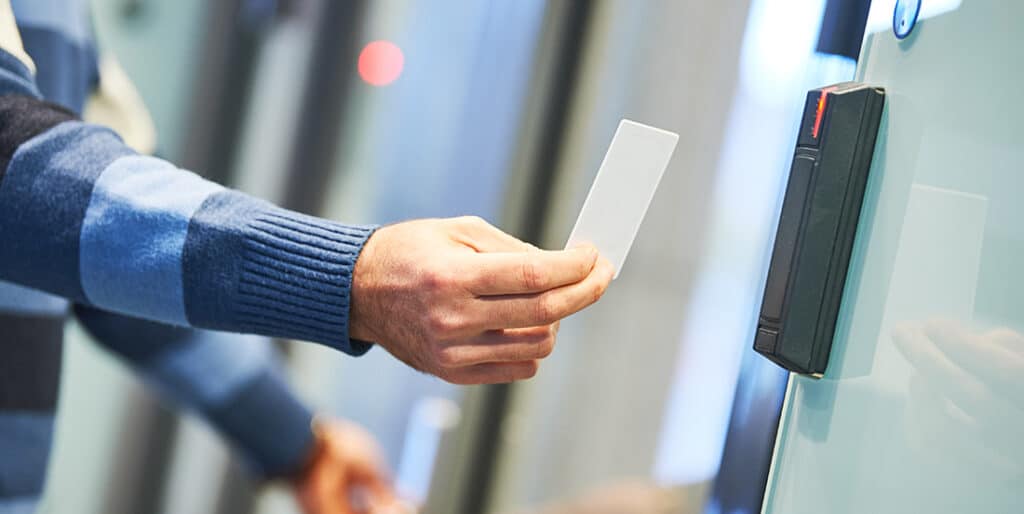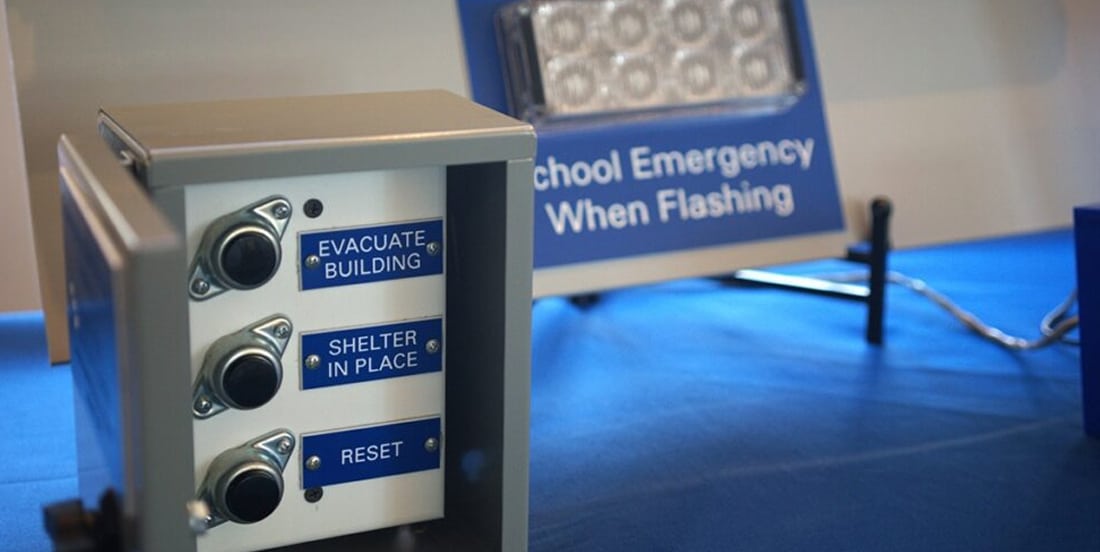Top Physical Security Tech Solutions to Safeguard Your Campus
How do you go about creating a safer school environment for your learning community? It’s certainly about more than a set of locks or a camera here and there. It’s far more complex and strategic than the individual solutions or assets themselves.
That’s why at Eastern DataComm, we encourage our customers to think in terms of a ‘School Safety Ecosystem’ (SSE), where policies, procedures, training, and technology work hand in hand.
When these pieces come together, they best safeguard your campus and create a district-wide culture of emergency preparedness that ensures students, staff, and guests know what to do and when. By understanding how each piece fits into the larger picture, schools can build a robust framework that prioritizes safety for everyone.
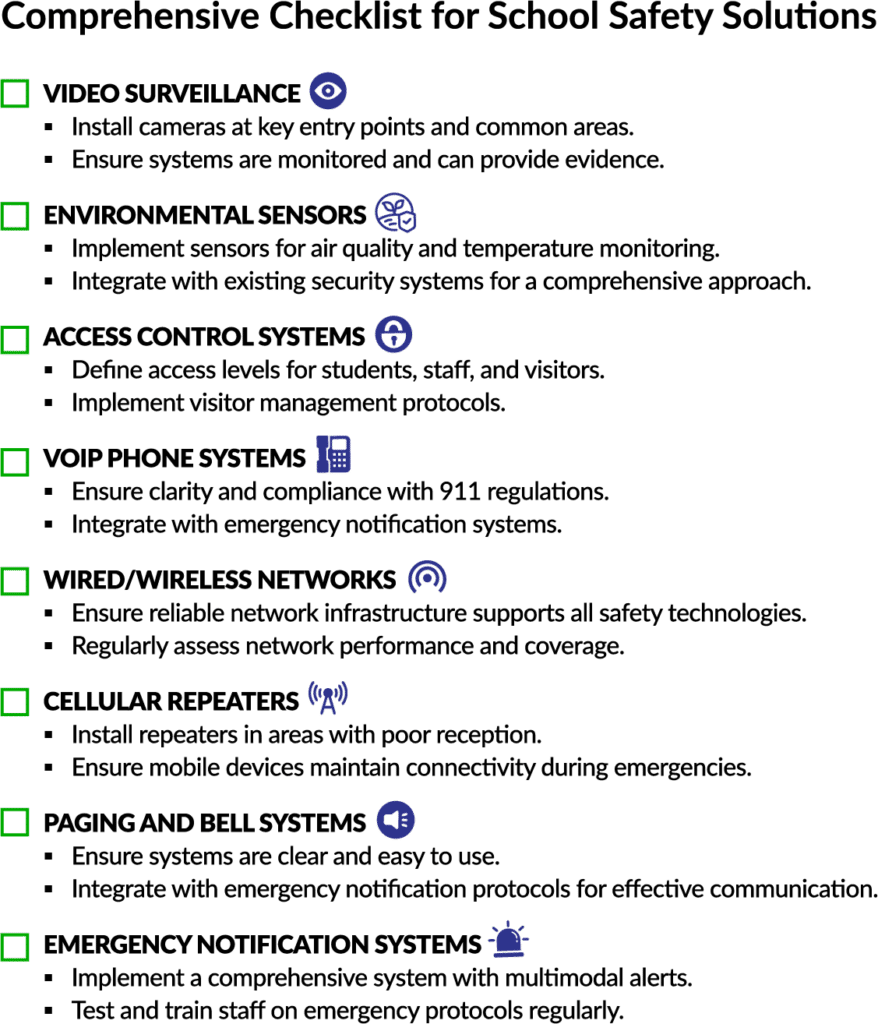
How to Improve Campus Security and Safety Through a Strategic Ecosystem
Improving campus security and safety starts with taking a proactive, comprehensive approach. It’s not just about individual pieces of hardware—it’s about how all your systems and protocols work together to keep everyone on campus safe.
A strategic School Safety Ecosystem brings together emergency communication systems, physical security measures, and training procedures into one cohesive plan. By adopting this ecosystem-based mindset, school administrators and campus security teams can better monitor campus activities, identify potential vulnerabilities, and deploy faster responses in real time.
This holistic approach ensures that your investment in safety technologies, such as access control systems and video surveillance, translates into meaningful, measurable results. Schools that implement comprehensive campus safety plans see improved communication among staff and students and an increased sense of safety throughout the campus environment.
For schools ready to take the next step, our Education Solutions page outlines how we can help tailor safety strategies to your unique environment.
What Is Your School Safety Ecosystem?
The School Safety Ecosystem is a holistic way of thinking about the security of your school community that emphasizes the importance of blending different technologies and strategies. This approach helps schools create a cohesive communications plan. It provides clear notifications and empowers quick responses when emergencies arise.
When we take an ecosystem perspective, we prioritize technology solutions that facilitate fluid communication because we value effectiveness, integration, and efficiency. Specifically, we value those that suit our individual school-specific needs, those that offer real-time notifications, and those that promote teamwork among everyone involved. User-friendly solutions and those that reduce the chance for human error are of the utmost importance. These are the solutions that make use easy when stress levels are high and every second counts.
Given the rise of violence on campuses and ever-evolving threats to the safety of learning environments, schools need to assess their current systems and identify areas for improvement. The next steps are to review available solutions, like those we’ll share below, and consider how these solutions might address those areas of concern within their own SSE.
Video Surveillance
Video surveillance systems are one of the primary physical security tools to keep campus safe. Their mere presence helps to deter potential threats. Additionally, using these systems assists with resolving issues by monitoring your school’s buildings and grounds 24/7/365.
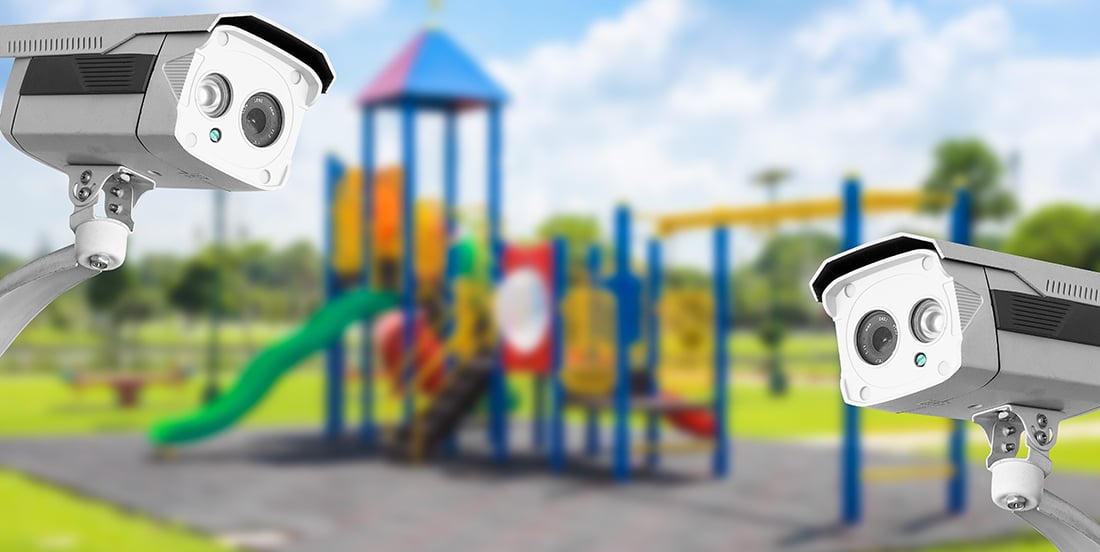
When you have video surveillance systems in place, you discourage malicious behavior. Additionally, should a crime or other unwanted event occur, you’ll have evidence for corrective action or when legal action is warranted, court proceedings.
On its own, your video surveillance system is an integral part of a School Safety Ecosystem. However, when combined with access control systems and emergency notification systems, it strengthens your ability to respond to emergencies more effectively and efficiently.
Selecting the Right Security Camera System for Your Campus
Choosing the right security camera system is vital for maximizing safety on campus. From elementary schools to sprawling college campuses, a modern surveillance system serves as both a deterrent and a crucial real-time monitoring tool.
Look for video surveillance systems that offer high-resolution footage, wide-area coverage, and integration with access control and alert systems. Cloud-based platforms also allow for remote access, helping school security teams and administrators stay informed—whether they’re in the building or off-site.
When your video surveillance system is scalable and easy to use, it ensures that monitoring doesn’t just become a box to check—but a proactive part of your school’s safety plan. The right surveillance technology not only records incidents but helps prevent them.
Enhancing Video Surveillance Without a Complete Overhaul
As video surveillance and video system security challenges arise, our team continues to work with customers to keep their schools and districts safe while keeping education budgets at the forefront of concerns.
That’s why we partner with industry-leading manufacturers like Verkada, who understand these challenges as well as we do. For example, Verkada’s Command Connector offers an alternative to costly rip-and-replace approaches that require you to start from scratch by leveraging existing camera hardware.
If you’re considering advancing or streamlining your video surveillance system, you can look to the Eastern DataComm team to help you increase efficiency. Best of all, with over 35 years of experience, we respect your budgetary guidelines so that the solution you choose addresses your most critical needs.
Environmental Sensors
Environmental sensors are technology tools that monitor a variety of conditions in the school environment. They track a myriad of conditions like temperature, detect vaping, and monitor air quality in areas like gymnasiums, classrooms, hallways, bathrooms, and cafeterias. These sensors enable you to ensure your students, visitors, and staff are safe and secure. Environmental sensor solutions act as another essential communications tool, providing alerts to school officials to apprise them of potential health and safety risks in real-time.
Integrating environmental sensors with other security technologies gives you a comprehensive picture of your school community. Ultimately, environmental sensors give you a chance to respond more efficiently and proactively to incidents and enhance overall safety.
At Eastern DataComm, Our Environmental Sensors Include Features Like
Safety Risk Monitoring:
- Tamper detection
- Temperature and humidity monitoring
- Motion detection
- Aggression detection
- Gunshot detection
- Occupancy monitoring
- Noise monitoring
Health Risk Monitoring:
- Carbon dioxide
- Temperature and humidity of food and beverages
- Nitrogen dioxide
- Air quality index
- Presence of particulates
- TVOC
- Vape detection
- THC detection
- Carbon monoxide
- Smoking detection
- Barometric pressure
- Formaldehyde level
Leverage environmental sensors to support your entire school community’s safety and well-being.
Access Control Systems
Access control systems are essential in managing who enters school facilities. By controlling access points, schools can prevent unauthorized entry and ensure that only approved people have access to specific areas.

These systems enhance security during emergencies. Access control solutions help set clear visitor protocols. Implementing modern access control solutions allows schools to create a safe environment that meets their unique needs.
Access control systems can be customized to support different zones within a school campus. For instance, administrative offices may require tighter restrictions than public gymnasiums or auditoriums. By setting tiered access protocols, schools can manage high-traffic areas while safeguarding sensitive spaces. This zoned approach allows school security personnel to respond more efficiently, ensuring that all access points throughout the campus are secure and monitored based on risk level.
VoIP Phone Systems
Voice over Internet Protocol (VoIP) phone systems are vital for communication in today’s schools. They provide clear call quality and work well with other safety technologies. VoIP systems can automate responses, reducing the risk of human error and enabling lockdown or protective emergency procedures at the touch of a button.
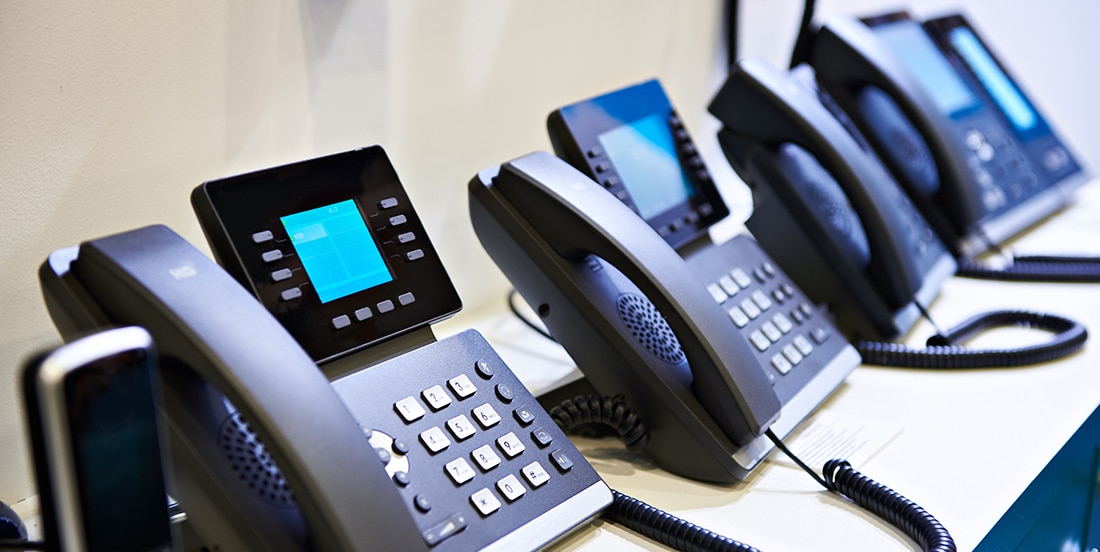
It also bears mentioning that recent FCC guidelines mandate certain capabilities for multi-line telephones, so you’ll want to be sure your VoIP system complies with federal regulations as well. To learn more about those guidelines, you can visit this resource that our team has developed on the subject.
The most effective VoIP phone systems allow schools to quickly connect with first responders and send out emergency notifications. With features like 911 compliance and integrated alerts, VoIP systems enhance the overall safety framework you develop within your SSE.
Wired/Wireless Networks and Infrastructure
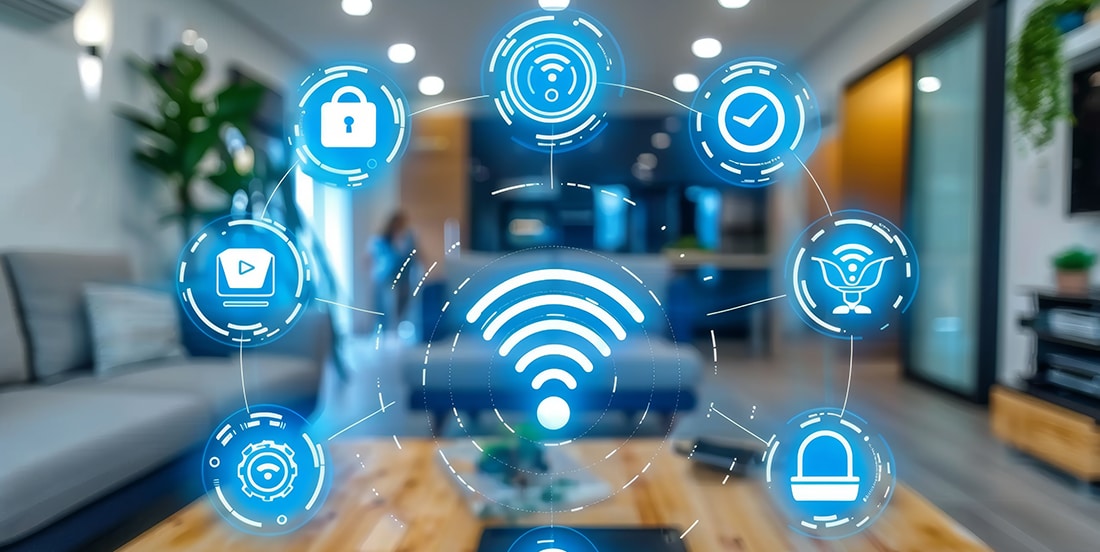
A reliable communication network is essential for keeping our schools safe. Both wired and wireless systems are part of the core of the school safety ecosystem. Essentially, they form the backbone of the system. Strong infrastructure allows information to flow smoothly. When you have high-quality cabling and strong wireless connections, you’ll have the stability your school needs for quick communication.
A strong network supports the technology used within the School Safety Ecosystem. It’s what helps staff respond quickly in emergencies and keeps daily communications running as planned. Wired/wireless network solutions and their infrastructure create a foundation from which a secure environment is built.
Cellular Repeater Solutions
Cellular repeaters have a very important role in the ecosystem. They enhance mobile communication by amplifying cell signals throughout school buildings. Wherever you might find yourself with a bad signal or weak reception, these devices ensure that mobile phones function optimally.
Cellular repeaters aid in the prevention of things like dropped calls and slow data transfers. Simply put, cellular repeaters contribute to the overall reliability of communication systems during emergencies and for day-to-day communications.
Paging Systems, Bell Systems, and Synchronized Clocks
Effective communication is vital during the school day and especially so during emergencies. Paging systems, bell systems, and synchronized clocks ensure that messages are delivered clearly and quickly.

These systems can be integrated with emergency procedures so you can deliver clear instructions during urgent situations, helping to keep everyone informed and safe. Plus the reliability of synchronized systems adds predictability to daily routines, which is crucial in stressful situations.
The Role of Campus Alert Systems in Emergency Preparedness
Campus alert systems play a crucial role in ensuring everyone on campus receives clear, immediate instructions in times of crisis. These systems are not limited to text alerts or mobile notifications; a robust campus alert system uses multiple channels—auditory, visual, and digital—to ensure every person is reached, regardless of their location or role within the campus community.
Effective alert systems help bridge communication gaps during lockdowns, evacuations, and other emergency scenarios. By delivering accurate information in real time, they empower students, faculty, and first responders to act swiftly and safely. Integrating these systems with other security technologies, like video surveillance and access control, enhances your overall campus emergency response framework.
Emergency Notification Systems
Let’s be honest, not all emergency notification systems are created equal. Some rely on a single mobile or smart device application, while others send text messages that might not reach school visitors, substitute teachers, support staff, new student teachers, transfer students, students with disabilities, or brand-new students.
Comprehensive solutions like Eastern DataComm’s LENS (Lockdown and Emergency Notification System) offer rapid response capabilities. With features such as one-button alerts and automated notifications, LENS ensures that all stakeholders are informed during critical events.
The integration of various communication methods—visual, auditory, and mobile—creates a holistic approach to campus safety, ensuring that everyone, from students to emergency personnel, receives timely and accurate information.
A Comprehensive Campus Security Plan: What to Include
Every school should have a comprehensive campus security plan tailored to its unique needs. This plan should include an audit of current physical security systems, detailed emergency procedures, designated safety roles, and a regular schedule for safety drills and training.
In addition to physical security technology like surveillance systems and access control, consider integrating modern communication tools, including campus alert systems and VoIP phones. These tools help ensure continuity in emergency communications and support your school’s daily operations.
A well-rounded plan also incorporates ongoing assessments and improvements. Safety is not a one-time investment—it’s an ongoing commitment to the well-being of everyone on campus.
Safety Starts with a Comprehensive Perspective
Building a strong School Safety Ecosystem involves integrating various technologies. When you combine an understanding of your own school community’s needs and the right strategic use of technology (like those mentioned above), your school can foster a secure environment that prioritizes wellbeing.
This comprehensive approach not only protects students and staff, but also cultivates a culture of preparedness that empowers the entire school community.
Our Team Is Here to Help Yours
At Eastern DataComm, we understand that creating a secure school environment means going beyond basic solutions. Our expert team takes pride in helping educational institutions develop a comprehensive campus security and safety ecosystem—one that integrates the latest in security tech solutions like video surveillance systems, access control systems, and emergency alert systems tailored to your campus’s needs.
We invite you to explore our full suite of Education Safety Services and see how our custom strategies can help you improve campus safety and ensure the security of your students, staff, and visitors. Whether you’re looking to assess your current campus security plan, enhance your surveillance system, or implement cutting-edge communication tools, we’re here to guide you every step of the way.
Contact us today for a complimentary school safety audit and start building a safer, smarter campus for your entire community. If you haven’t already, be sure to get your copy of our guide, Building a Safer School Ecosystem, here.

